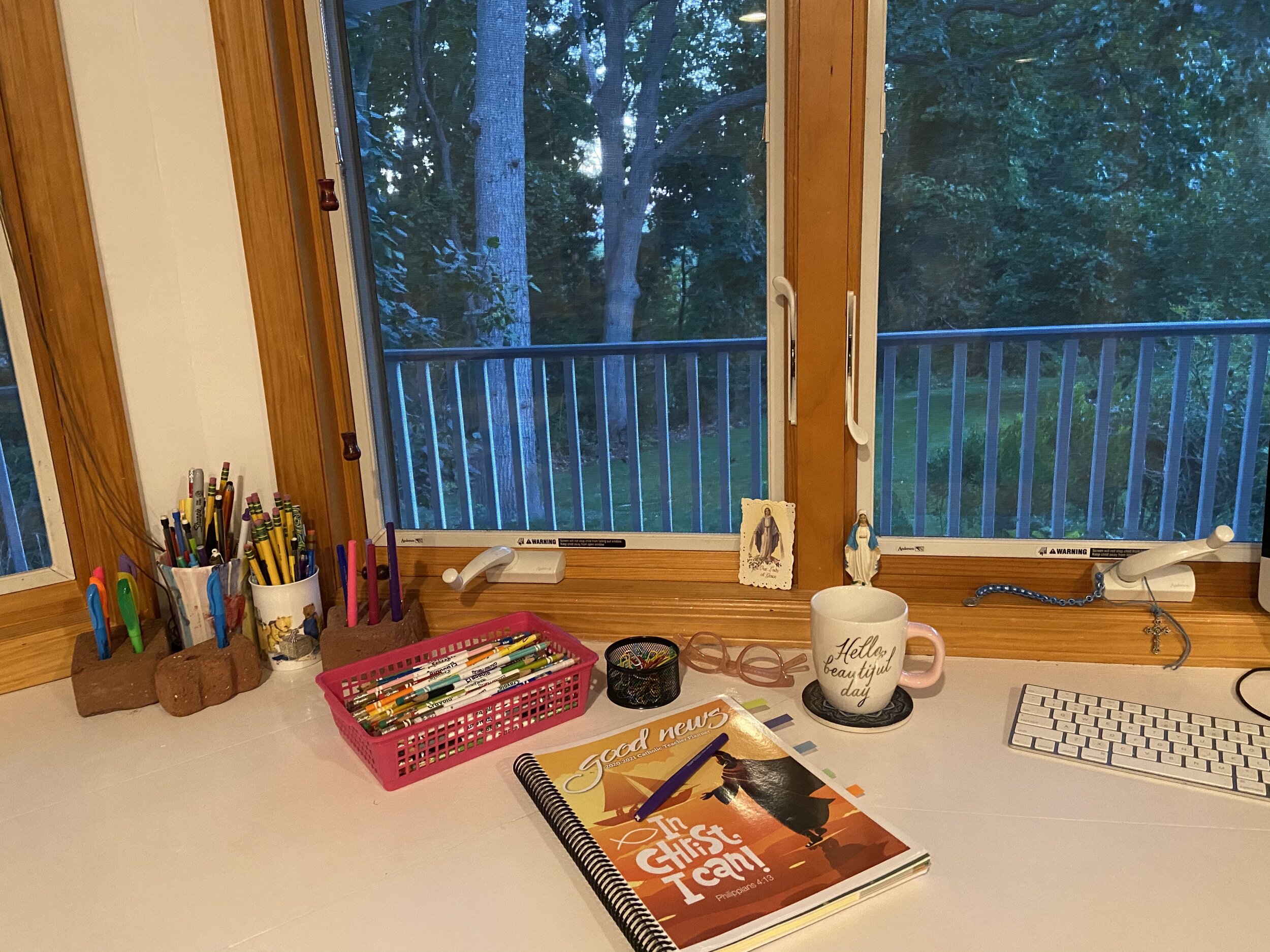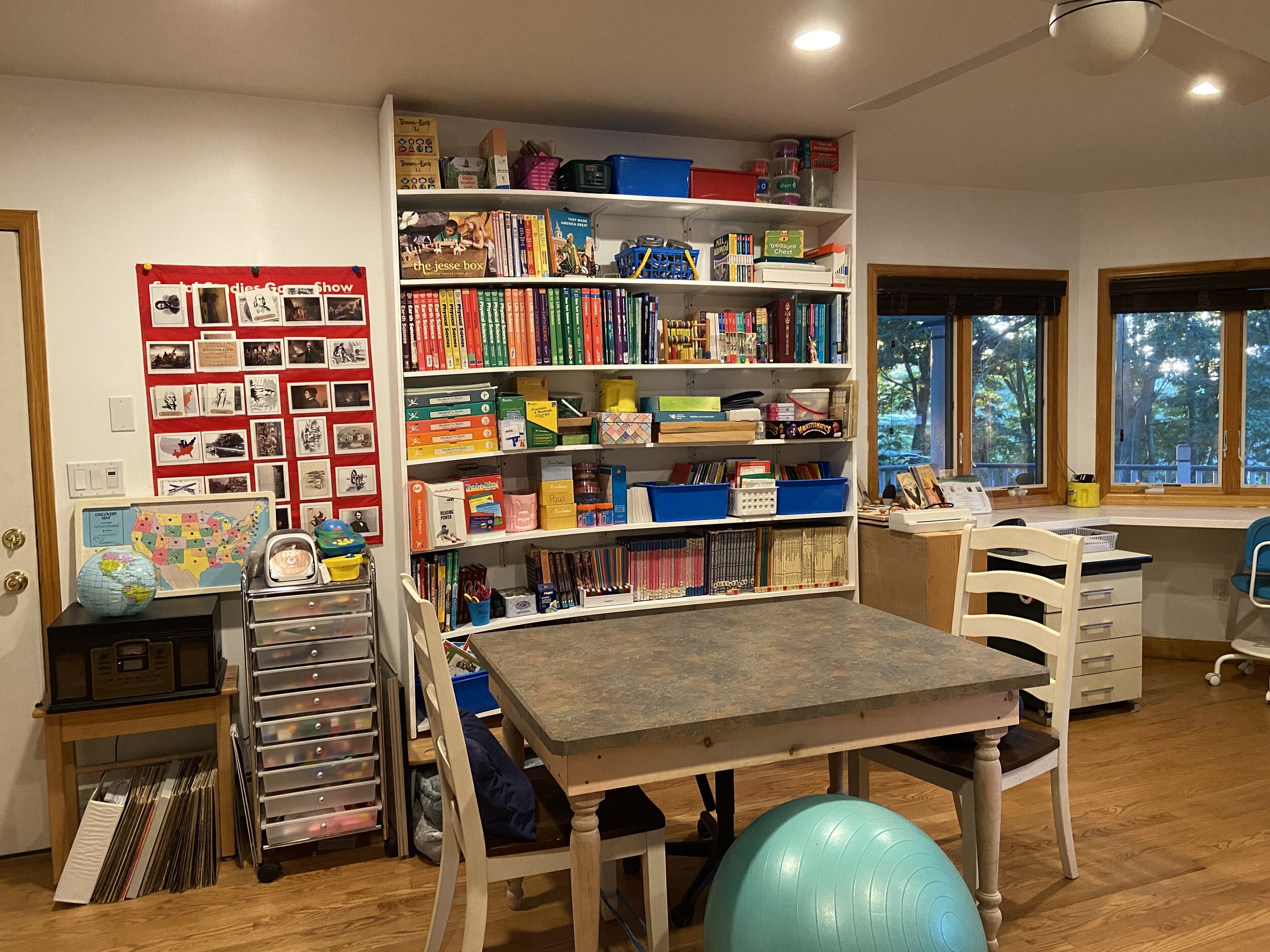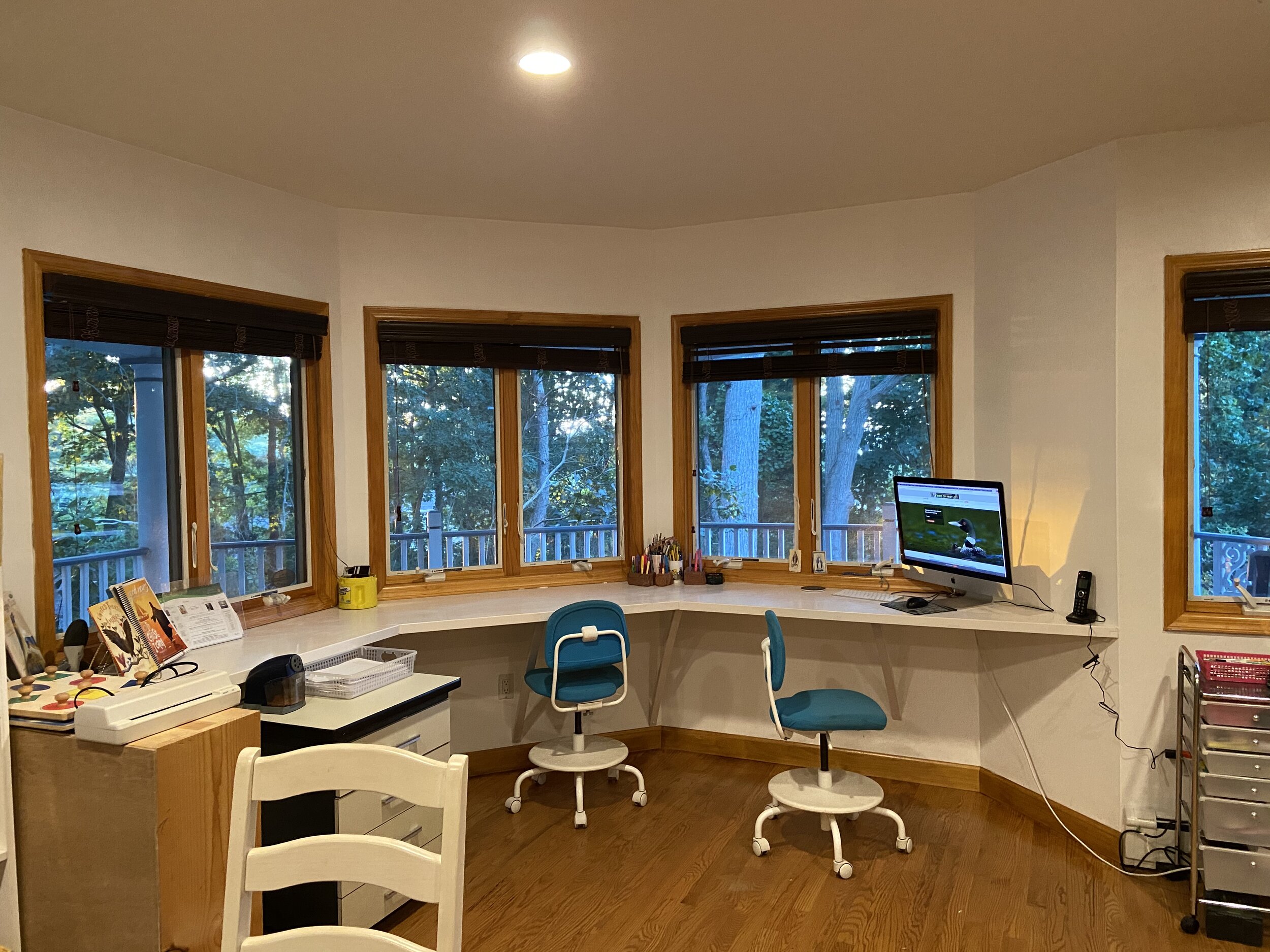H O M E





To simplify your home-school planning, think about HOME
Think about organizing your;
Hours,
Objectives,
Materials
& Environment
as you order your HOME learning.
Note: If you are brand new to homeschooling you may want to start with objectives/ goals, then move to the other areas.
Hours -
How will you organize your hours?
You will need to chart out your week. Start with the activities that occur at a set time that you want to include as part of the school day. For our family, that has always been music lessons and church choir practice. Some years, it was also a gym program for home -school families. Some years it has been art lessons, or classes. Some years, Lego league or Robotics were part of our schedule. Many years it included weekly or monthly gathering of families from the local catholic home school community. This year, of course, will look different! There will likely be less on the schedule this year, but that can be a blessing in some ways. Less is sometimes more.
It is good to be very intentional about the activities that you spend time on weekly. You will also want to chart out time for any online classes. However, these usually involve only one or two children at a time, and are in the home, so the parent may find this a good time to work one on one with someone not involved in an on- line class at that time. The online classes offered through Mother of Divine Grace, for example, meet once or twice a week. This allows for connection and discussion with peers, as well as helping students move through the content of each course at a steady and guided pace. When I had little babies at home, I had music and art teachers come to our home and this allowed the children to rotate through music lessons while someone could work with me, and babies could rest or play. Now that the children older, we have found a fantastic music studio that allows several children to take lessons at the same time. These lessons are online for us right now also.
Now that you have decided on your weekly activities and classes, and put those on the schedule, you have some anchors. The next step is to block out the school hours, the hours needed for meals, and other things that need to happen around the house. I use a planning and organizational app called Cozi. It is a life saver! It can be used for planning: activities, meals, grocery lists, household tasks, and even tracking birthdays and special events. It can also be set to provide reminders that can be sent to all family members, or just selected family members. It can also be set to include Fly Lady tips. Fly Lady is an organizational website devoted to helping mange household tasks. I use the the Cozi app and website daily and I print weekly schedules from their website. I just learned that I can now include links to Zoom classes right in our weekly schedule, which I am really excited about! This program has helped me organize so many aspects of school and life. I am a HUGE fan!
As you plan out the school hours remember to be flexible in your planning and plan to revisit and tweak throughout the year. Consider keeping a log, or notes of what is working well, and any areas you want to adjust. You can make those notes; right in your teacher planner, on sticky notes, enter them in a notes app, in the Cozi journal, or in a notebook. I find it helpful to list the subjects my children can do independently and those they will need to do with me. Then I can plan how to use my teacher time best. If a little one does not have much that they are able to do independently, I add some things they can do on their own, even if it is things like, puzzles, or a learning program on the computer or i-pad app. That way everyone has some independent work. Also, if you are blessed with a large family you can plan times to pair children. This could be time younger children build blocks while listening to classical music or an audio book, or time when an older sibling reads to a younger.
Each new school year, we start the new Math books and one other subject two weeks before we start full school, just to get back in the swing of things. This allows a gentle transition back to the full routine. Especially if this is your first year, consider building up to the full schedule over a few weeks. As you adjust to the new material and curriculum you have selected, you may find it takes a little less time to complete each subject.
I love lists and kids really are motivated to complete their list. A list allows them to feel accomplished and also lets them know there is an end. But if some days the list is not fully completed, there is always tomorrow, and adjustments can be made. Feel good about all that was completed that day!
Did you know that checking lists has been shown to make people feel good? So enjoy making and checking off your lists but remember, life does not always go exactly as planned. Sometimes it goes even better than planned! You may end up reading an extra chapter or two in the read aloud, or the nature walk may take a bit longer because you found a baby turtle or two. That is one of the best things about homeschooling! So enjoy those moments and you will find much joy on the journey!
https://www.cozi.com/
http://www.flylady.net/
https://catholic.creativecommunications.com/Products/ZSH20/20202021-elementary-catholic-teacher-good-news-planner.aspx?bCategory=CCGNP
Objectives/Goals-
The what and the whys
Setting some basic goals will be very helpful. If you are new to homeschooling, you may just know you want to provide a Catholic education that will meets, or exceeds, all the regulations set by your state. Be sure to educate yourself about the laws pertaining to homeschooling in your state. Home School Legal Defense is the best source for that information. If you have been reading about homeschooling, or have been homeschooling for sometime, you will likely have some feeling about the type, or style of homeschooling, that seems right for your family. This will impact your curriculum choices, as well as teaching methods. It will also allow you to develop some more specific goals and objectives for your children.
If you have decided to follow a home-school program, the program will have some clearly stated goals and methods, and materials to work toward those. Mother of Divine Grace, for example, is a classical catholic program. It provides a classical education is oriented toward the good, the true, and the beautiful. Whatever program you have selected, it will be helpful to consider the goals of the program in general, and then the particular goals for each child.
Also, consider a few specific objectives to focus on with each child. These can be in a particular subject area, or perhaps a virtue.
It is good to revisit your general goals and your specific objectives as you move through the year and from year to year.
Materials-
Books, Syllabi & Supplies
Once you have decided on a program, or a plan of study for each child, you will need to buy, borrow, and/or gather, the needed supplies and materials. You will want these organized by person.
Mom materials-
A catholic planner- I love the Good News Catholic Teacher Planner! I love that it is liturgical based and includes saints and scripture.
A magnetic white board is a must! You will also need whiteboard markers, magnets, and an eraser.
A pocket chart with sentence strips is certainly a great addition if space and budget allows.
A printer/ copier is really incredibly helpful! I use mine everyday.
Syllabi and/or teachers guides for some, or all subjects.
Also fun to have- Post it notes and tabs, index card of various sizes, paper clips, highlighters, rubber bands, pens in various colors, pencils and pencil sharpener, stamps, stamp pads, stickers, a date stamper, should all be on a wish list.
Student materials-
Clipboards- I have found it helpful to have color coded clipboards for each child. These clipboards will be used to hold any extra worksheets and weekly lists.
Look at your plan, or syllabus, for each student to determine what books are needed and organize those by subject and student.
Decide how many notebooks each child will need and what is the best type of notebook. How will each notebook be used?
Do you want a blank notebook, one with lines, or one with a half lines and half blank combination? If your child is younger consider buying paper with the dotted mid- lines to help with letter formation and spacing. If the notebook is for Math, consider graph paper. Younger children and those with struggle with writing neatly, may benefit from larger graph boxes.
You will want a portfolio that includes completed work samples and documents learning. These samples can be digital, on paper, or a combination. I recommend taking pictures of hands on projects that have been completed, especially art projects, as it is not possible to keep everything. Pictures are easy to include in the portfolio. Will you use a large three ring binder, file folders, folders with multiple pockets, or will it be completely digital? A digital portfolio can also be printed at the end of the year and bond nicely together, but be sure to save backups of digital work.
Shared materials-
A globe, atlases, wall calendar, reference books, early readers, picture books, story books, chapter books, ( note it takes time to build your own library but used books and book sales are a great help in this) Also libraries, audio books and digital books are other ways to access books.
Art supplies- Markers, crayons, colored pencils, pens, pencils, scissors, rulers, plain and colored paper, watercolor paints, paint brushes, clay or play dough, beads, string, paper bags, various craft kits are just some of the staples you may want to have on hand.
Computers and / or tablets
Hands on- Puzzles, small white boards, puppets, blocks, magnetic letters and numbers, flashcards, dice, dominoes, linking blocks, playing cards, base ten blocks or Math U See blocks ( if using Math U See), lotto games, matching games, bingo games ( can tie into themes), other board games.
Music- When my oldest where young we had a listening center for books and music on tape. Yes, that was a long time ago! Anyway, now computers, cell phones, i-pad and Alexia devices, can all be used to play music and audio books but it is good have a plan for including classical music especially.
Instruments- for young children, consider a box of scarfs and simple instruments like a drum, horn, egg shakers and rhythm sticks. As children get older a recorder is a great first instrument. Piano lessons are also another wonderful way to enrich a child’s education.
Environment
A dedicated space- I love having a school space! Families will need to think about where they will “ do” school and have a place for school materials. If it is not a dedicated room, it may a corner of a room, or a shared space that is multi-functional. Families that have been living the homeschooling lifestyle know, “school” or learning, will often spill into many spaces and happen everywhere, but I like having a “ home base,” a gathering space, where we do much of our learning together.
Over the last twenty- plus years of homeschooling, I have had four different school rooms, in four different homes, in three different states. I have tried various layouts and have found we prefer tables to small individual desks. But each of my children have a desk in their own rooms they can use for drawing or other such activities.
So once you have decided on a space, you must consider how to order the space. If you have a school room, you will want to consider the layout of that space, and how to organize the materials within it.
If your children are taking online classes you will want to consider the best location for doing those. Sometimes these can be done on an i-pad or even a phone, so that can add to the options for location. Ideally, you can find quiet spot with few distractions.
A must have for any home-school family is bookshelves. Over the years they seem to multiply and fill all available spots. But even a new home school family will need a small book shelf or another system for storing books. Some people like crates or bins, and others find a closet can work. It is best, if the school books can be grouped by child. I have a cabinet from IKEA that I am crazy about for school book storage because it has individual sections that close ( and keep it looking neat and tidy) and each section is big enough to hold all the books for one child.
I believe having an ordered space helps create a peaceful and productive learning environment. From year to year, your family’s needs will change and so you will find some re-ordering needed, at least yearly. If you are just getting started you may need to move things around a bit to find what works best. Have fun with the process! Setting up a school room is a blast! Enjoy!